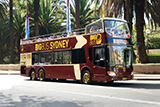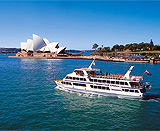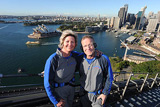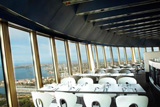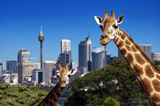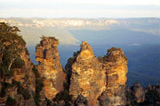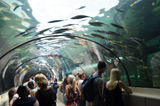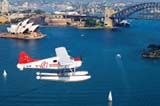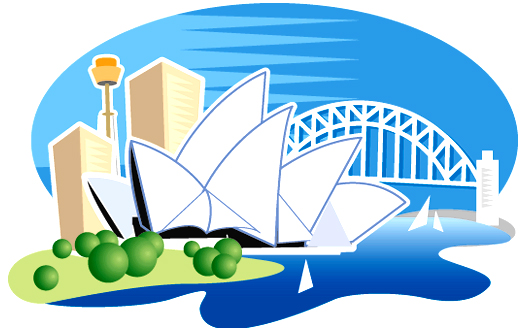
sydney.com.au
Est 1994, Sydney's oldest tourism website


|
|
LUNA PARK


The lit-up smiling face of Luna Park, on the shores of Milson Point, is a beacon for visitors to Sydney seeking a fun time. Picture: Adam JWC via Wikimedia Commons
Luna Park continues to delight and
thrill visitors to the harbour city
GETTING THERE
Take the Milson Point ferry from Circular Quay.
Opening hours:
Luna Park's smiling face, with its beckoning smile, has been a gateway for 81 years for anyone seeking a fun time in Sydney. Whether it be families and children or servicemen and their sweethearts, the amusement park at Milson Point in the shadows of the Sydney Harbour Bridge has bestowed lasting memories on all who walk through its famous mouth.
Some of Luna Park's buildings and attractions are so etched in Sydney's history that they are now heritage-protected by the National Trust. After some decades of adversity the park now continues in its role in delighting visitors to the harbour city.
Built and opened in 1935 after the completion of the Sydney Harbour Bridge, Luna Park has been the home of legendary rides and attractions including the Big Dipper, Ghost Train, Coney Island, Giant Slides and Rotor. It has evolved over the years with a team of resident artists charged with coming up with designs for new rides or else updating the look of existing ones.
The rides were one thing but the character of the buildings and structures that accommodated the rides and attractions was something else. The resident artist at the park for a long time was the legendary Arthur Art Barton, who in the 1950s created the face synomonous with the Luna Park entrance - based on the smiling face of Old King Cole. Barton's art is recognisable in the facades of many of the buildings.
Walking through Luna Park and along the harbour foreshores outside the park what strikes you most is the strong, bright colours and ornamental design applied to buildings like Coney Island. Towers rising up in a fantasia of colour are reminiscent of scenes from the Arabian Nights Although the amusment park was lit up at night, it was the appeal of visiting another world - a fantasy world - that drew people during the day.
Although Luna Park is a Sydney icon and an amusement park that most people associate with Sydney, it had its origins in South Australia. Luna Park in Glenelg, an Adelaide suburb, was placed in voluntary liquidation in 1935 and its rides were purchased by private interests in New South Wales, dismantled and transported to Sydney, where they were reassembled at Milson Point over a three-month period.
In the 1950s new ride designs and amusements from amusement parks from all over the world were introduced into Luna Park, but it wasn't all smooth sailing for the iconic park. In 1979, 13 people were injured on the original wooden Big Dipper (since replaced by a steel rollercoaster). A short time later, the Ghost Train ride caught fire and was quickly destroyed. As a child barely in his teens I can recall riding on the Ghost Train in the pitch black, scared out of my wits, and almost jumping out of my seat every time a ghoulish character sprung out of a hidden recess. It was without doubt the best ride of all time.
Over the following years the amusement park faced difficult economic times and was closed on a number of occasions.
Misfortunes, dwaining interest in amusement parks and poor management and maintenance resulted in the park being closed long-term in 1988, when reports from independent engineers revealed that some rides had to be shut down for renovations and repairs. Lack of endeavour to repair the rides and reopen the park saw the New South Wales State Government issue an ultimatum to the company owning the amusement park - open the park or lose the lease.This was the catalyst for the government eventually terminating the lease and establishing the Luna Park Reserve Trust. Afterwards, the National Heritage Trust listed several buildings for heritage protection.
On 12 October 1990, the "Luna Park Site Act 1990" was gazetted to protect the site of the park and designate it for amusement and public recreation. Luna Park became one of only two amusement parks in the world to be protected by government legislation, the other being Denmark's Tivoli Gardens.
Luna Park reopened in 2004. Rides had been removed, restored and in some cases upgraded to comply with modern safety standards. Luna Park was back in business.
- Rod Ashcroft

Luna Park is spread out along the foreshores of Milson Park . Picture: © Tim Ferrier, 123RF.com


The glitter of Coney Island still draws visitors to the fun park. Picture: © Sydney.com.au


Looking out of the park and towards the Sydney Harbour Bridge. Picture: © Sydney.com.au


Creative designs and bright colours were synomonous with all the park's rides and attractions . Picture: © Sydney.com.au


Fantasy-like domes and columns were a feature of the Big Dipper rollercoaster. Picture: © Sydney.com.au

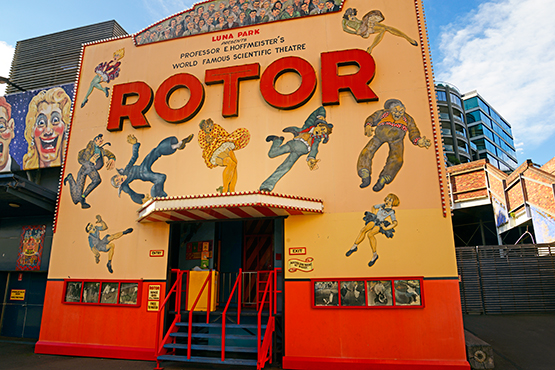
The Rotor was one of many rides introduced into the park from from other amusement parks throughout the world. Picture: © Sydney.com.au


The admission ticket building is a blur of colours and excited painted faces. Picture: © Sydney.com.au


A dome structure on one of the buildings is stunning in both design and colour. Picture: © Sydney.com.au


Decorative architraves around windows, spaceship-like columns and a silver-painted multi-tier dome add to the ornamental design of Luna Park's buildings. Picture: © Sydney.com.au
